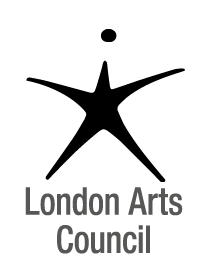“Magisterra At The Museum”
“Global Connections”
Program Notes
Oliver MESSIAEN (1908 – 1992)
Vingt Regards sur L’enfant-Jésus, 10. Regard de L’Esprit de Joie for solo piano
French composer, organist, ornithologist, and teacher, Oliver Messiaen was born on December 10th, 1908. Messiaen began composing at age eight and studied the piano with Gotran Arcouët and Robert Lortart, whilst also studying harmony with Jehan de Gibon. He enrolled in the Paris Conservatory in 1919 and studied with Marcel Dupre. Eventually leaving the Conservatory in 1931, he began working as an organist in the Church of La Saint Trinité, where he stayed until his death. Messiaen was summoned to serve as a nurse at the start of WWII, but shortly after was taken prisoner at Görlitz in Silesia, where he was held from 1940-1941. This is the experience Messiaen recounts during his first arrival:
“When I arrived at the camp, I was stripped of all my clothes, like all the prisoners. But naked as I was, I clung fiercely to a little bag of miniature scores that served as consolation when I suffered. The Germans considered me to be completely harmless, and since they still loved music, not only did they allow me to keep my scores, but an officer also gave me pencils, erasers, and some music paper.”
Here he composed his major work Quartet for the End of Time. It was set with the intention of being performed with three other prisoners, including a violinist, cellist, clarinetist, and himself at the piano. When Messiaen was released from the camp, he resumed his employment at the Paris Conservatory, where he became professor of harmony, and retained his position until his retirement in 1978. Throughout the entirety of his life, Messiaen’s Catholic faith had the most influence on his musical endeavors. He also spent a considerable amount of time transcribing different bird calls, which he incorporated into his compositions through their rhythms and melodies. At one point, he could recognize five hundred bird calls throughout Europe. With this instinctive passion, he created Oiseaux Exotiques, Catalouge d’Oiseaux and Chronochromie.
Vingt Regards Sur L’Enfant-Jésus (Twenty Gazes upon the Infant Jesus), is a deeply personal and powerful embodiment of Messiaen’s complete devotion to Catholic faith. The piece was composed in 1944 in Paris, not only symbolizing the ongoing liberation outside his window, but the liberation of his own freedom. It is believed that the piece is also meant to complement a set of twelve poems about the Nativity scene, by Maurice Toesca, but some suggest the piece has thematic links to his mother's poem, L’Âme en Bourgeon. The twenty movements are divided into four groups according to their title description, two dedicated to God, the Father, and the remaining to God, The Son, and Holy Spirit. Messiaen draws on the iconography of Mediaeval and Gothic Renaissance art, but his knowledge of Eastern music shines through, as much of the movements’ pacing are derived from Hindu rhythms. The twenty movements make up about two hours of music, making it one of the most difficult and impressive works from solo piano repertoire. The specific piece programmed, Regard de l’Esprit de Joie, is an intense, loud, and exasperatingly difficult movement to play. Throughout, a blend of Western jazz and Hindu dance rhythms intertwine. The middle section introduces a new theme, taking on a joyful yet dissonant and gaudy melody. Messiaen stated that in the entirety of this piece he sought a “language of mystical love, at once varied, powerful, and tender, sometimes brutal, in multicolored arrangements.”
Thomas FORTMANN (b. 1951)
Cabrade.ch for violin and piano
(written for Annette-Barbara Vogel and Magisterra Soloists)
Tommy Fortmann was born in Switzerland and became a successful songwriter during the 70s, while also engaging in an international golfing career. He wrote his first hit at the age of 16,
which was followed by over a hundred titles released in more than 27 countries. Famous German rock stars such as Udo Lindenberg, Love Generation, Jürgen Drews and others, as well as British artists, e.g. Alexis Korner and Italian singer Daniela Davoli have recorded his songs.
He composed the music for the musical Tell, which created a scandal in Switzerland. The record made it into all German-speaking charts.
At the age of 26, Thomas Fortmann abandoned his career as a rock musician and dedicated himself to further studies in composition and instrumentation. This period formed the foundation for many chamber works, operas and musical theater, but also several orchestral pieces, Lieder-cycles, choral and organ works with commissions and scholarships from the Swiss Federal Office of Culture, Zurich Opera House, Open Opera St. Gallen, Canton Ticino,
City of Zurich, EU-Kaleidoskop, Espace Nuithonie, Bühnen Aarau, Murten Classics, Gaia Festival, Mozart Festival Trento, Salerno Pianofestival, University of Houston, Carnegie Hall, among others.
The music of Thomas Fortmann does not subscribe to any particular school of thought. He studied the various composition techniques but maintained a critical point of view towards them. This led to the development of a notably personal style, often uniting different, sometimes even contrary impulses of the modern. Formalistic concepts seem to serve him mainly as a tool and playground, resulting in very original ideas. It is, however, always important to him, despite the frequent use of complex structures, to directly communicate with the listener and make an emotional impact.
In the mid -80s Thomas and his family moved to Tuscany where he founded the Accademia Amiata and its Festival Toscana delle Culture. In 2016, he foundedCLAZZ International Music Festival.
The commission was clear: a composition with one movement for a Canadian violin and piano duo, a second for a Brazilian string trio and a third for all together as a piano quintet, so that despite limited rehearsal time together, a piece would emerge that includes all instruments. The themes develop and run through all 3 movements, with the main reference between them being the notes (letters) of the country abbreviations: CA - BrA - DE and CH (thus the geographical distances of the different cultures as a “one world” statement). In the first movement, I pay homage to Canadian throat singing with the “scratches” (the melodic sequence at this point and the accelerando are typical of this style of singing). The 2nd movement, the Brazilian one, has something of the sultriness of a midday siesta besides the rhythmic samba passages; and in the Adagio of the 3rd movement, the title-giving motif is expanded into a twelve-tone row, respectively into a twelve-tone melody, and developed dodecaphonically - I don't know how many listeners even notice this because of the strong tonal reference and the emerging harmonic beauty. It all sounds simple, but it is a difficult piece, because the necessary lightness can only arise if everything is played rhythmically with a skillful precision.
Leopoldo MIGUEZ (1850 – 1902)
Sonata in A major, op.14 for violin and piano
Upon arriving in Portugal, Leopoldo Miguez began his studies with Belgian violinist Nicolau Ribas, later moving to Belgium to study harmony with Cesar Franck at the Brussels Conservatory. It was only until age 21 did he return to his hometown, Rio de Janeiro. In 1882, Miguez would depart for Europe once again, making his way to Paris under the recommendation of Brazilian Emperor, Pedro II. There, he performed many of his repertoire, with notable success from his Symphoni em Si Bemol, also making notable connections with those of similar Wagnerian ideologies to him, such as Ernest Reyer, Vincent D’Indy, and Carlos de Mesquita. He shortly made his way to Brussels to study composition, but it is unknown of when and who he studied with. He returned to Brazil in 1883, where he began an active career in conducting, teaching, and performing on the violin. One of his greatest opportunities occurred in 1885, where he was invited to be the principal conductor of the prestigious Italian orchestra, Cia Lírica, who was then touring Brazil. Many of the orchestra members showed hostility when told of the incoming Brazilian conductor, with Carlo Superti articulating his particular distaste, leading to Miguez’ humiliation during rehearsals, and ultimately his resignation. Still, Miguez would go on to find immense success, becoming a business firm partner with pianist Arthur Napoleāno, selling pianos, scores, even publishing a magazine “Revista Musical e de Belas Artes”. He was also one of the founders and directors of the Rio de Janiero National Music Institute until his death.
It is likely that Miguez began composing his Violin Sonata in A major in Europe. He would have not only been influenced by French aesthetics, but the social and political situation of the climate of France as well. Between the Franco-Prussian War, and the Formation of the Third French Republic, France found itself in a position desperately trying to revive its spirit, resulting in a boom of French instrumental music. A shift in European values could also be felt in 19th Century Brazil; with the French Bourbon Restoration and Second Reign of Brazil, also trickled its ideas and ideologies to local intellectuals, and artists of the time. While one of his more popular compositions, Parisina op.15, showcases his Wagnerian compositional style, his Violin Sonata shares similarities with the likes of Fauré, Schumann, Saint-Säens, and Mendelssohn. The Sonata is triumphed for its understanding of thematic transformation, especially displaying the influence of Brahms. Miguez himself, alongside his firm partner, Arthur Napoleāno premiered his Sonata on July 18th, 1889. Since then, there have only been four released recordings, with only one of them taking place outside of Brazil, in Montreal, Canada. The Sonata consists of four movements: The sweet and tender Allegro, stirring and dolce Andante, elegant yet mysterious Scherzo, and victorious, jubilant Vivace.
Sergei RACHMANINOFF (1873 – 1943)
Sonata in g minor, op.19 for cello and piano
(arr. for violin and piano by Annette-Barbara Vogel)
Throughout much of his life, Sergei Rachmaninoff suffered from a stagnating lack of confidence. When his Symphony No.1 in d minor was condemned by the public, he found himself briskly admitted to the hypnotist Nikolai Dahl after a severe breakdown. What came from these sessions, was an emergence of the composer from his deep depression, paired with the creation of one of his most beautiful works, Piano Concerto No.2 in c minor, which was dedicated to the fellow hypnotist. During the Great War, Europe was left in a state of devastation. Rachmaninoff, along with many Soviet composers at the time, became emigrates, leaving him to never see the sights of his beloved country again. Something else had changed during this period: Many composers, the likes of Elgar and Sibelius, were a part of the chain in the undergoing transformation of Romantic music, also seeing the increasing popularity of “modernist” music as composers like Schoenberg, Bartok, and Stravinsky explored the limits of atonality. Despite the changing times, Rachmaninoff remained one of the last true Romantic pianists, who would follow in the steps of Tchaikovsky and continue composing Romantic music. Preceding the events of the Russian Revolution, Rachmaninoff would find himself going back and forth between Switzerland and America. Never feeling acclimatized to either of the English-speaking cultures, and the isolation that came it, followed a decline in his creative writing process near the end of his life. Decades after his death, Rachmaninoff was remembered as one of the finest conductors and concert pianists - which is still true - as we are fortunate enough to hear his own recordings of Chopin, Liszt, Beethoven, as well as his own compositions. His dream of being remembered for his compositions looked rather futile, as he was often faced harsh criticism. Today, however, he is widely remembered as a man who would compose with his most honest and deepest emotions.
With a boost in confidence, Rachmaninoff composed his Cello Sonata in g minor just a year after the roaring success of his Piano Concerto No.2 in c minor. Together, with the dedicatee of the piece, Rachmaninoff and cellist Anatoli Brandukov premiered the piece on December 2nd, 1901, in Moscow. Despite whatever lyricism may be heard from the cello, the piano still maintains an impressive array of virtuosity and technical demands, with its effects just as spectacular. Some have gone as far as to joke about the piece being one big piano sonata with instrumental accompaniment! Many of the themes throughout the four movements bear stylistic similarities to that of Orthodox hymns, and the repetition of single notes strikes resemblance to church bells.
The first movement begins in a slow and dreamy introduction, later quickening into what is the Allegro Moderato. This initial theme remains through the turbulent development, until reaching its point of highest tension. The movement ends in one of the composer's signature rhythmic gestures in the piano. The Allegro Scherzando is an intricately woven movement, astonishingly emotionally volatile, but still has a tasteful back-and-forth dialogue between the cello and piano, regardless of the character. The Andante is considered the gem of the piece, for its wonderfully serene and melancholic motifs, and stretched phrases which build into expressive climaxes before alleviating into mellow satisfaction. In the Allegro Mosso, the cello retains its vocal character, often in simultaneous dialogue with the virtuosic piano line. This movement is multi-facetted; the persistent and triumphant opening theme, morphing into a wistful melody, before slowing into passionate lyricism. Just as it’s believed to be the end, the duo comes alive once more and scurry towards the brilliant finale.
Beloved by many, this Sonata has been arranged for many instruments, including clarinet, viola, and as will be featured in this concert, the violin.
Program Notes by Helen Faucher












